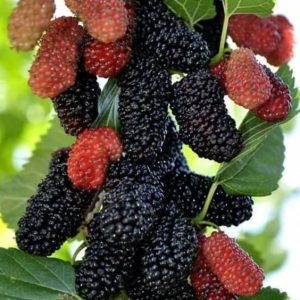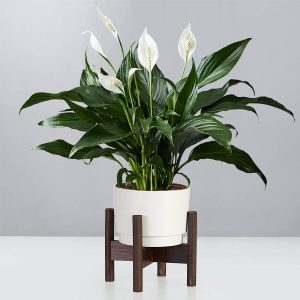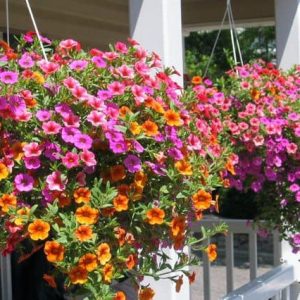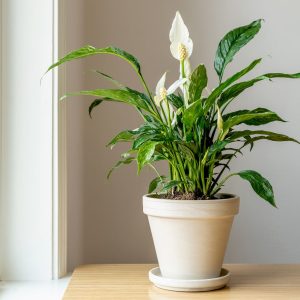Looking for something green to spice up your living room? How about a hanging plant? We have ten of the most beautiful and durable hanging plants.

Casual, elegant or elegant: hanging indoor plants add something special to any room. With their long, trailing shoots that flow over the edge of the pot like a waterfall, they add a certain style to any room. At the same time, these green housemates improve indoor air and can be integrated into the design and ecosystem of your home. Whether in a tall pot, trailing from the top of a shelf or hanging from the ceiling in a basket, hanging plants are always a good choice.
Discover which hanging plants are not only beautiful but also sturdy and easy to maintain in our list below.
1. Heart leaf philodendron
Heart leaf philodendron (Philodendron chandens) is the plant you often see growing upright around a moss pile. However, this plant can easily be grown as a hanging plant as well. It looks great, for example, after a hanging basket. With its firm, heart-shaped leaves, which can be up to 30 cm long, it is perfect as a lush green ornamental plant. And the cotyledon philodendron is more than just a beauty in the plant kingdom, it is also very hardy. It rarely ever suffers from diseases and apart from fertilizing and watering, the only care required is to occasionally remove dust from the leaves.
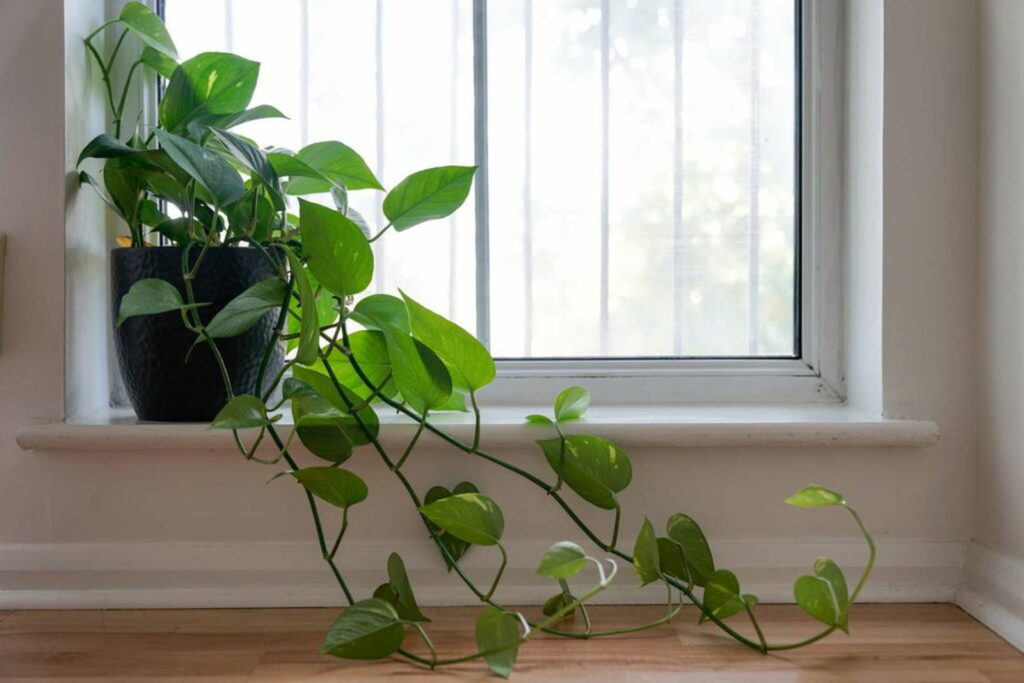
2. Sword fern
The leaves of the sword fern (Nephrolepis exaltata) are up to one meter long and look like a bunch of beautiful green feathers. The striking leaves can hardly be overlooked and, depending on the species, they grow either upright or overhanging. Especially beautiful are the varieties with twisted or wavy leaves. However, it’s not just its beautiful leaves that make the sword fern a great hanging houseplant: they’re also very easy to care for. Give them some water and fertilizer now and then and they will thrive. However, they only need a little water, as they are sensitive to water damage.
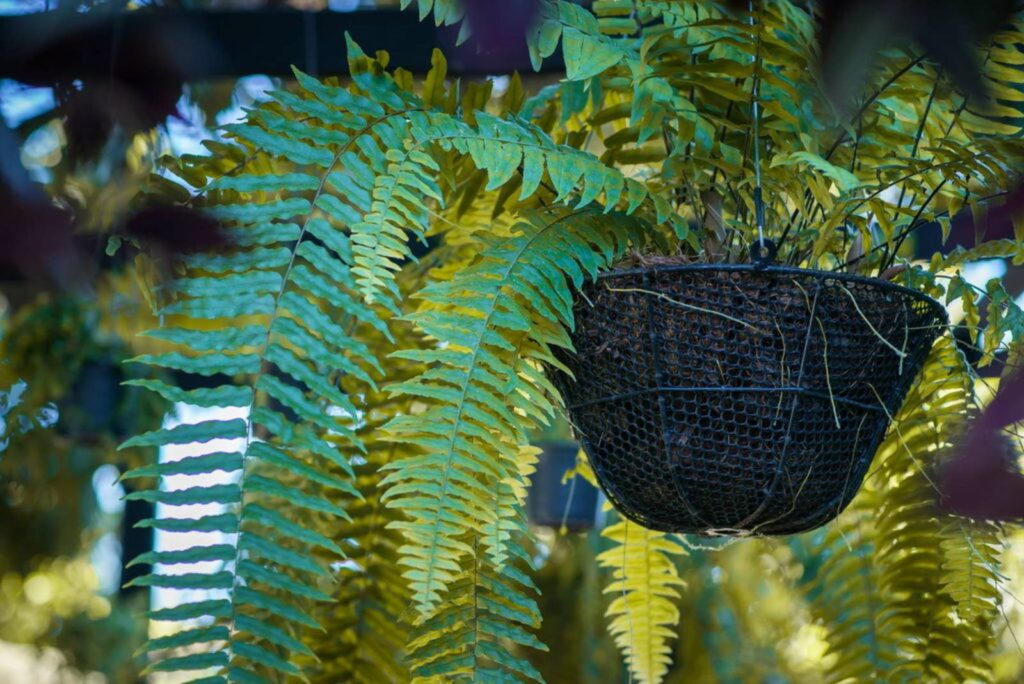
3. Common ivy
Most people are familiar with common ivy (Honor helix) as a climbing plant on house facades or trees – but this robust climber is also a fantastic indoor plant. It is particularly suitable as a hanging plant and not only looks good but is extremely robust. Apart from regular watering and (if necessary) fertilizing, ivy does not require any additional care. It will even thrive in darker rooms where other plants struggle to survive. The only downside to ivy is that it is slightly toxic, sometimes causing skin irritation. Consequently, it is not suitable for households with small children or animals.
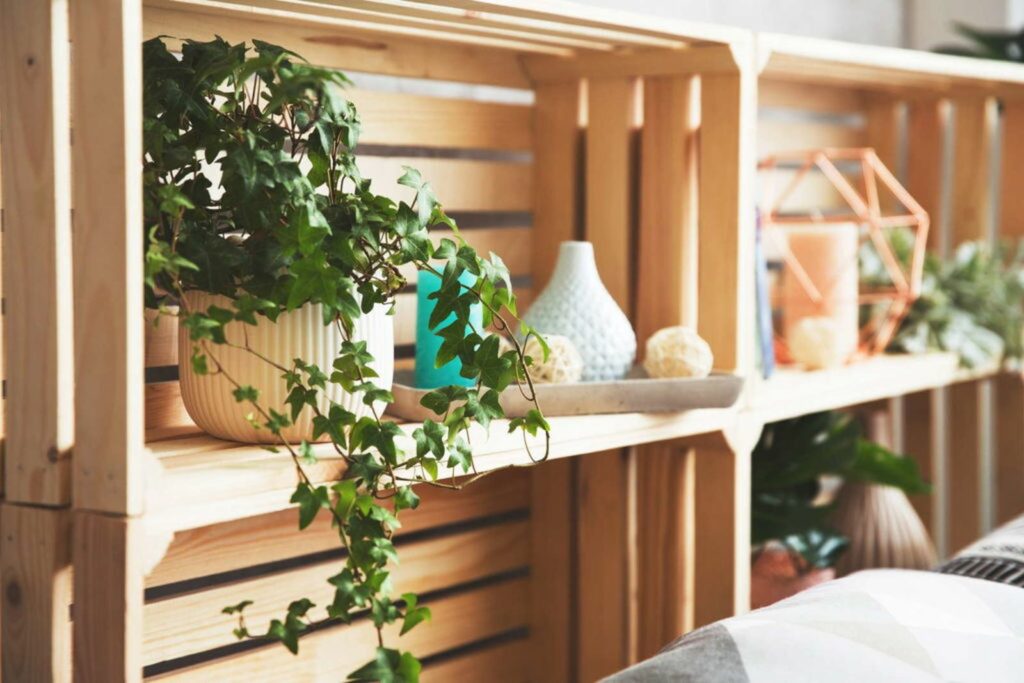
4. Ornamental asparagus
Asparagus (Asparagus officinalis) is better known as a delicious vegetable than as an ornamental – but its little brother, the ornamental asparagus (Asparagus densiflorus), also makes a beautiful hanging plant. This leafy, very low-maintenance ornamental is very reminiscent of classic asparagus and impresses with its finely fanned leaves. The leaves are also popular as green foliage in bouquets. When ornamental asparagus blooms (which rarely happens if you take good care of it), it is adorned with small white flowers that develop into extremely decorative red berries. Unfortunately, the berries are highly toxic and therefore not suitable for eating.
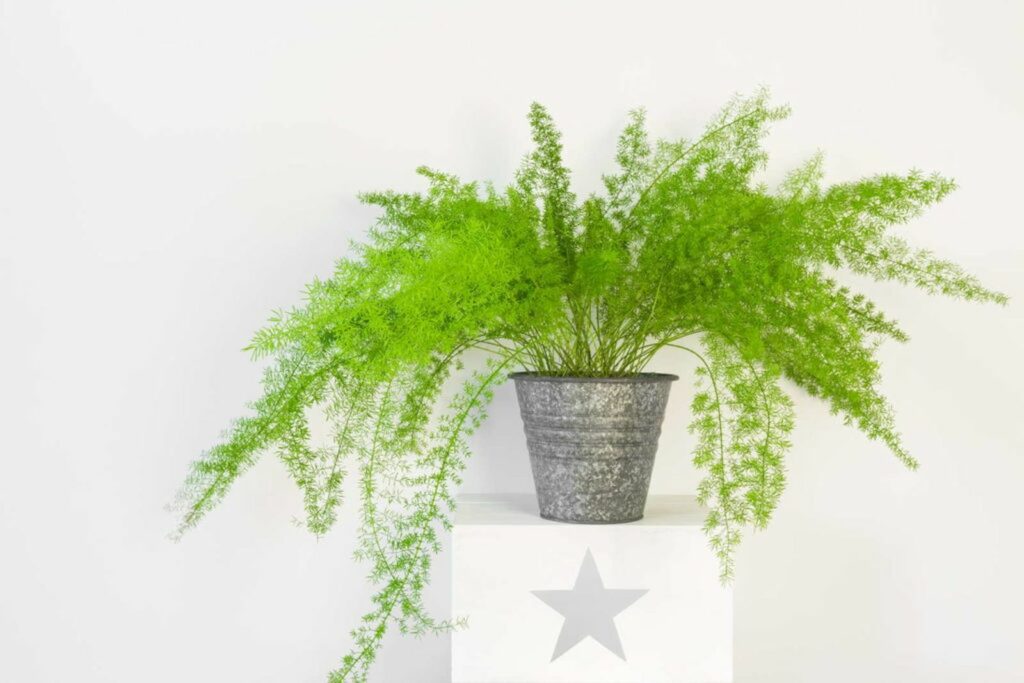
5. Basket plant
“Robust” and “long-lived” are probably the two words that best describe the basket plant (Callisia fragrant). Kept at 18 to 22°C out of direct sunlight and watered sparingly, this plant will thrive. With its rose-colored leaves, which can sometimes border on red, the basket plant is a fantastic interior addition. If cared for well, basket plants can develop long flowering stems (called panicles) that make them a real eye-catcher. In Russia, the basket plant is valued for more than just its beauty. It is also used as a “living pharmacy” – as it is said to help with a wide range of ailments.

6. Spider plant
Spider plants (Chlorophytum comosum), also known as green lily or spider ivy, grows almost anywhere, both indoors and outdoors, as long as the temperature is above 10°C. They prefer a bright place, but require little care. They grow well when watered generously and fertilized occasionally. Spider plants have a beautiful dense leaf that produces long hanging flower shoots. They also have a positive effect on your indoor climate. In fact, spider plants are one of the best air purifying plants and are effective at clearing particularly polluted indoor air.
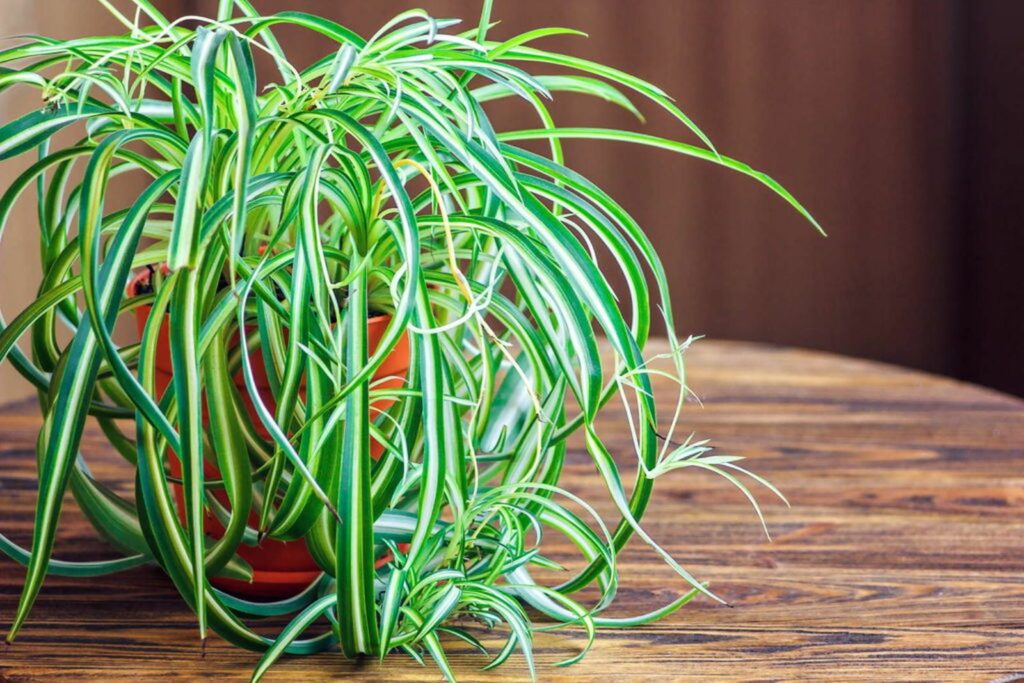
7. Lipstick plant
The Lipstick Plant (Aeschynanthus) has drooping, tubular flower clusters and fleshy leaves that make it one of the most beautiful hanging plants. Its flowers, which glow red, orange or yellow during the summer months, make the lipstick plant a real head turner. They should be kept in temperatures between 20 and 25°C, watered occasionally and fertilized a little every two to three weeks. You can help stimulate good flower growth in the spring by keeping the plant nearly dry for four to five weeks through the winter.
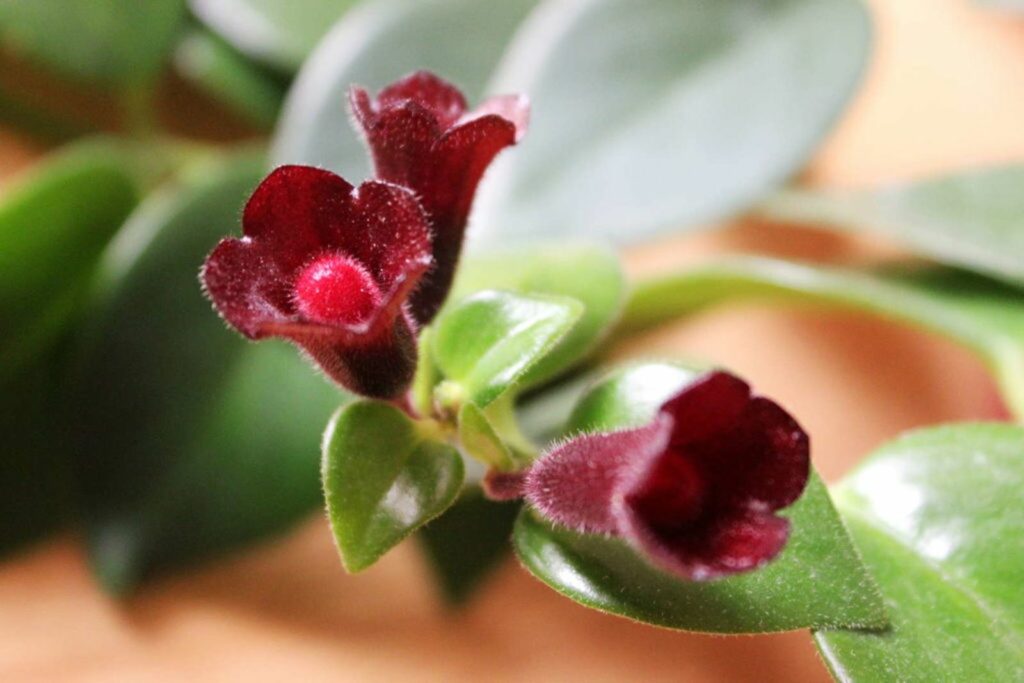
8. String of pearls
Anyone who doesn’t know the string of pearls (Senecio herreianus) can immediately see where the name comes from. What look like hundreds of intricately threaded green pearls are actually the small, round leaves of the pearl ribbon plant. Some of the vines create a lovely effect by trailing right down to the ground. The string of pearls is not only an extravagant eye-catcher, the leaves also store water during dry periods, making it very maintenance-free. It only needs to be watered when the soil has dried out completely.
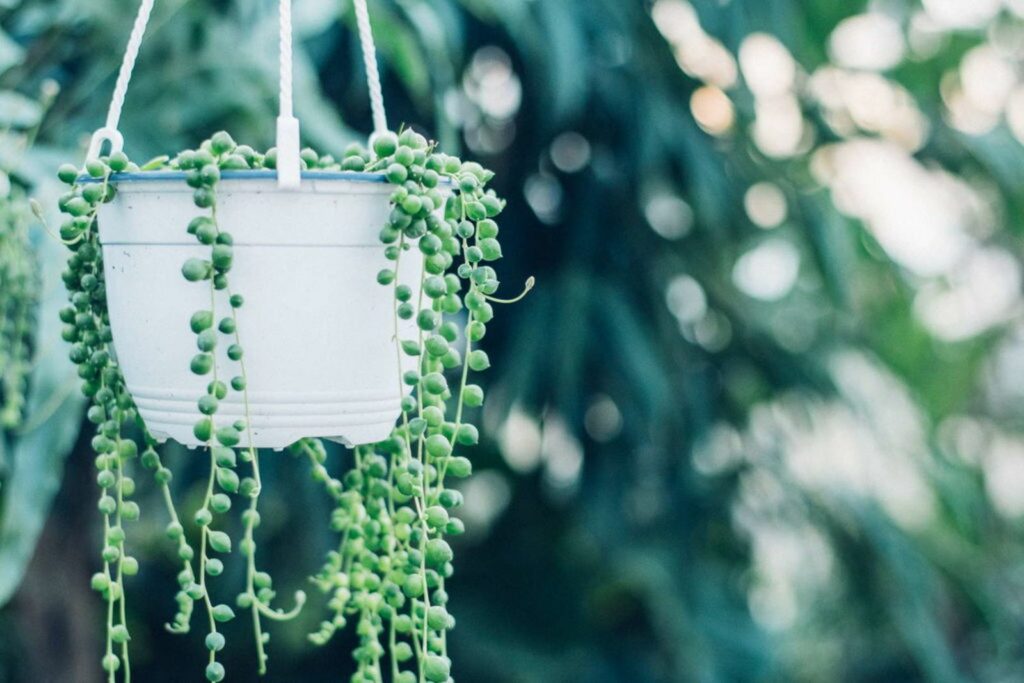
9. Pothos
Pothos (Epipremnum), also often called devil’s ivy, is known as a climbing plant, but this wintergreen is also a wonderful hanging basket plant. Pothos weaves a dense curtain of leaves that can make an excellent decorative room divider. It is very hardy and easy to care for, which makes it extremely popular as an indoor plant. It tolerates occasional droughts or long watering intervals and does not need fertilizer. In addition, its leaves are extremely decorative and often display patterns in white, cream or yellow. However, Pothos is so much more than “just a pretty plant”. It is well known as an air purifier that sustainably improves the air quality in a room. It can even reliably absorb exhaust gases, cigarette smoke and formaldehyde.

Devil’s Ivy is just one of many air purifying plants. Read this related article to discover our top 10.
10. Mistletoe cactus
Although its appearance may suggest otherwise, mistletoe cactus (Rhipsalis cassutha) really belongs to the cactus family. With its bushy, long overhanging shoots, it looks good both in a pot and in a hanging basket. Contrary to its appearance, its character fits the typical cactus cliché and is extremely easy to care for. Mistletoe cactus is a very hardy plant that will forgive major care mistakes – making it the perfect plant for beginners. In a warm, semi-shady spot in your home, for example, it will thrive when watered once a week and fertilized once a month. Only rarely do they need to be replanted.
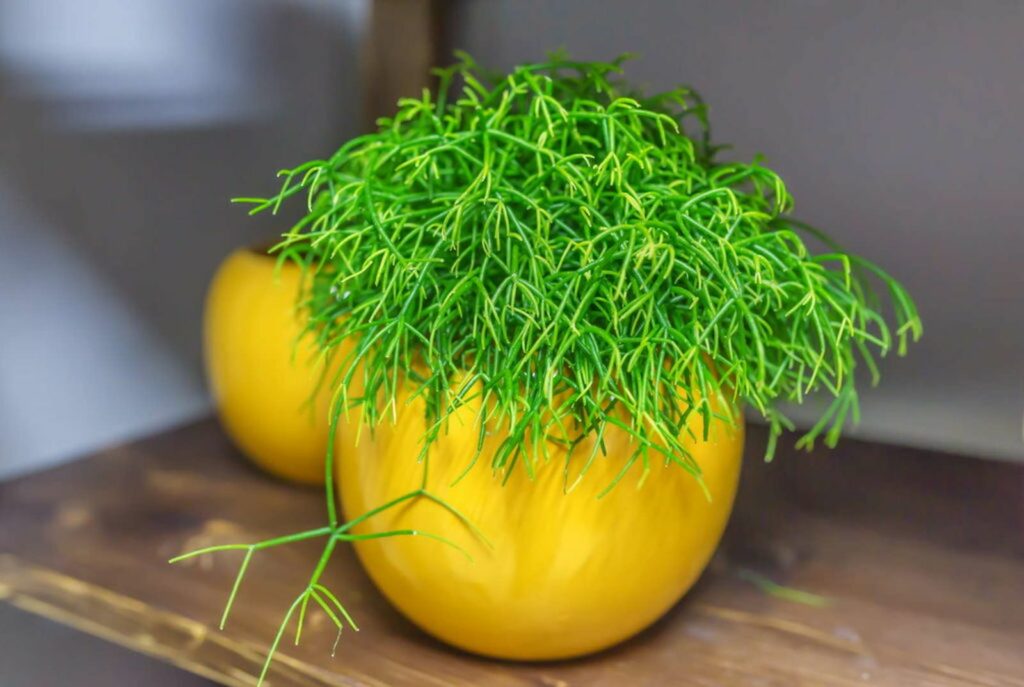
House plants need lots of nutrients to maintain their decorative, trailing growth. We recommend feeding your hanging plants regularly with a liquid fertilizer such as our Plantura Liquid Houseplant Food. This can be done quickly and easily with a watering can and poses no danger to your pets.
